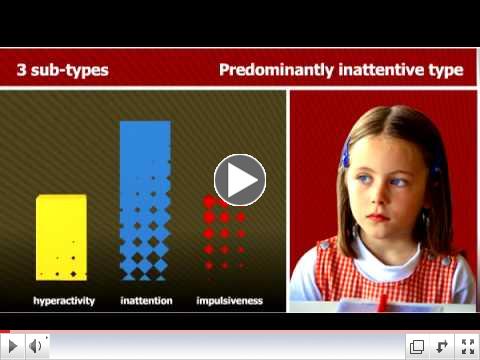|
End-tidal CO2 level (ETCO2) as a "vital" vital sign?!
| |
"Vital Signs" usually include "body temperature", "pulse/heart rate", "blood pressure" and "respiratory rate". Some include a fifth sign as vital - "pain" (on a scale of 1-5), though objections have been raised to this as it is so subjective. Other "signs" have been utilized (e.g. pulse oximetry, urinary output, blood glucose, etc.) but are not universally used or accepted. Overall, the usual vital signs correlate poorly with outcomes.
An interesting study examined vital signs plus ETCO2 retrospectively form 1,328 Emergency Department records and related them to death during hospitalization.
A low ETCO2 (acidosis usually) (in adult patients) is the strongest "vital sign" predictor of death during hospitalization (and correlates directly with serum bicarbonate levels, anion gap, and lactate levels).
American Journal of Emergency Medicine
|
|
Clinical Practice Guidelines for Quality Palliative Care.
| |
Palliative care may be viewed as a patient and family-centered holistic interdisciplinary care model of optimizing quality of life by anticipating, preventing and treating suffering throughout the continuum of illness involving addressing physical, intellectual, emotional, social and spiritual needs, facilitating patient autonomy, access to information and choice.
An outstanding and extensive publication (3rd edition) updating the 2009 version of the "Practice Guidelines" fully outlines the structure and process.
This is a "must read" for all clinicians.
The National Consensus Project for Quality Palliative Care Clinical Practice Guidelines for Quality Palliative Care 3rd edition 2013
|
|
|
"Tongue-tie" or a short, too tight or too stiff frenulum occurs in 5-10% of babies; more commonly in boys and frequently in those with a previous family history. Tongue tie may lead to restriction of movement of the tongue with the infant having difficulty "latching onto the breast". Depending on severity, frenotomy is the treatment choice.
Journal of Human Lactation
|
|
|
Download, print and pin this information on your office wall.
-This is a "Must Have" (Ed.)
|
|
|
Does analgesic overuse contribute to chronic post-traumatic concussion headaches?
A retrospective chart review of 104 adolescent patients seen for post -concussion headache lasting 3-12 months, indicates that 70.1% meet criteria for probable medication-overuse headache, and most will improve following discontinuation of analgesics.
Pediatric Neurology
|
Biological overlap of Attention-Deficit/ Hyperactivity Disorder (ADHD) & Autism Spectrum Disorder (ASD).
Copy number variation (CNV), is the number of copies of a particular gene/or region of the genome, which varies from one individual to another. A study of a large number of ADHD, ASD and normal children's CNV/pathway analyses data, indicates that there is a significant overlap between CNV regions and biological processes found in ADHD and ASD patients (as compared to control data from normal children). Journal of the American Academy of Child and Adolescent Psychiatry
|
Video Feature
 | | What is ADHD? (www.explania.com) |
via YouTube
|
|
"Allergic Asthma" - not all patients are the same!
A study involving 125 children (av. age: 8.9 yrs.) with IgE mediated allergic asthma identified 4 phenotypic clusters: - House dust mite sensitization (single allergen) and "mild" asthma.
- Multiple allergies and "mild asthma".
- Pollen sensitization with "severe exacerbations of asthma" (pollen sensitization).
- Multiple allergens and "moderate/severe asthma" (plus eczema, higher levels of IgE and mold in the house).
As IgE-mediated asthmatic children have a worse prognosis and greater frequency of exacerbations with poorer lung function in childhood and adulthood, identifying phenotypic heterogeneity within this group may improve treatment direction and the ability to enhance prognosis prediction. Journal of Pediatrics |
Clostridium difficile (C. difficile) infection (CDI).
Clostridium difficile a gram positive spore forming bacteria, first described in 1978 as a cause of diarrhea, has increased in incidence (2-4 fold) and severity over the past years. A new hyper virulent strain has recently been described. Complications, treatment failures and recurrence rates have increased.
Suggested management of CDI includes:
- Infection control methods (isolation etc.).
- General supportive measures.
- Discontinuance of antimotility treatments and if possible antibiotics.
- Drug treatment options:
- Oral metronidazole (not approved by the FDA for CDI).
- Oral vancomycin for severe or additional recurrences (with or without metronidazole).
- Intravenous metronidazole with vancomycin (for severe or complicated CDI).
- Fecal microbial transplantation.
- Other medications (most of whom are unproven).
Therapeutic Advances in Gastroenterology
|
Underwriting Opportunities
|
With a circulation of over 5,000, Updates in Pediatrics offers an excellent opportunity to promote your brand at affordable rates.
|
|
Updates in Pediatrics is brought to you by:
| |
|
|
|